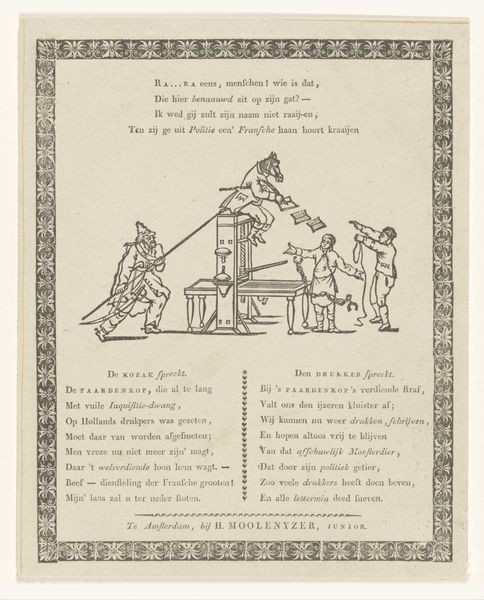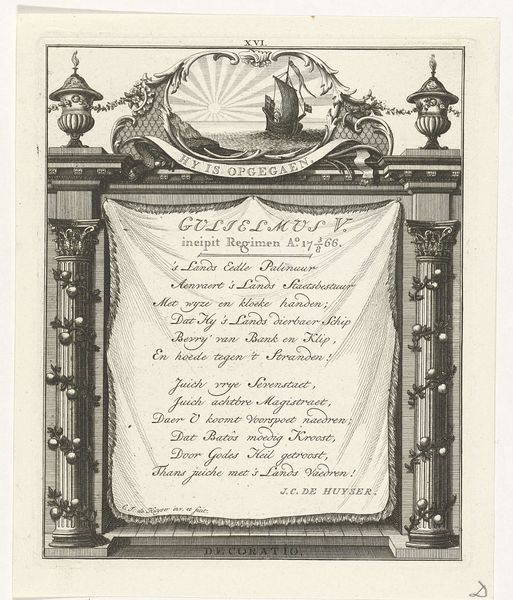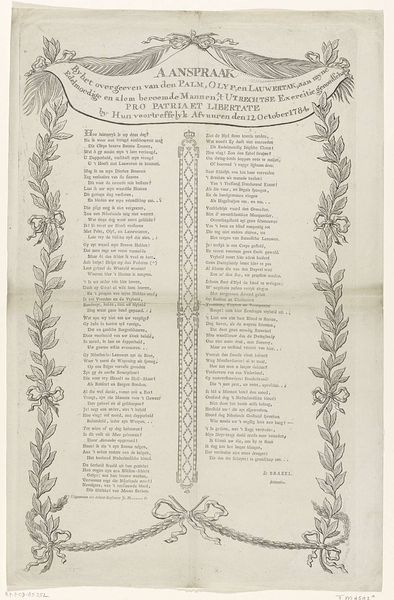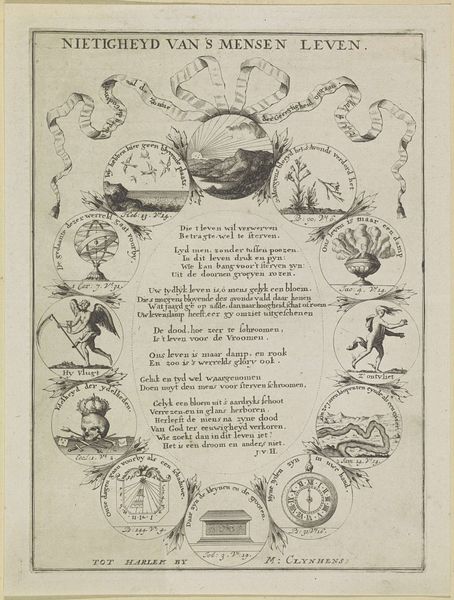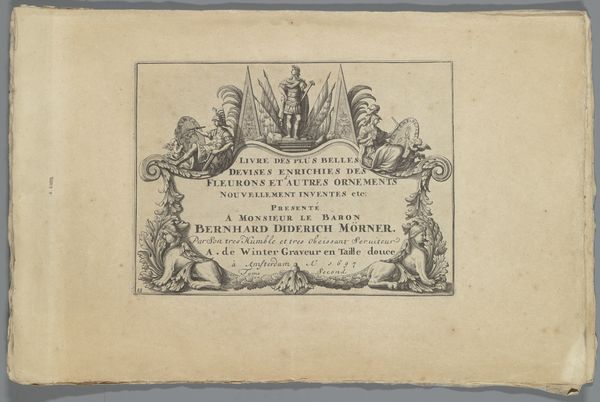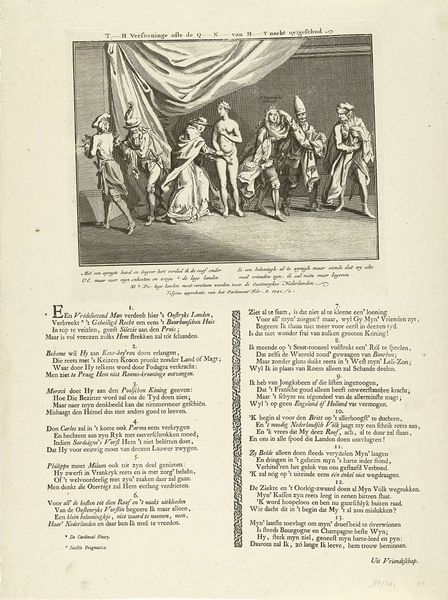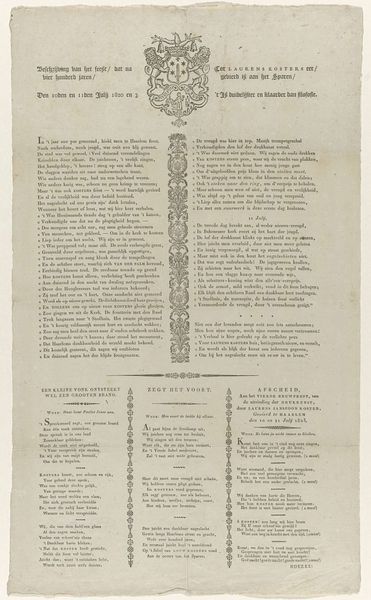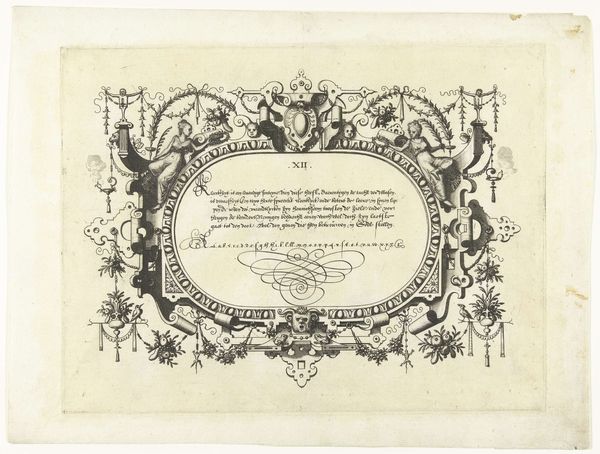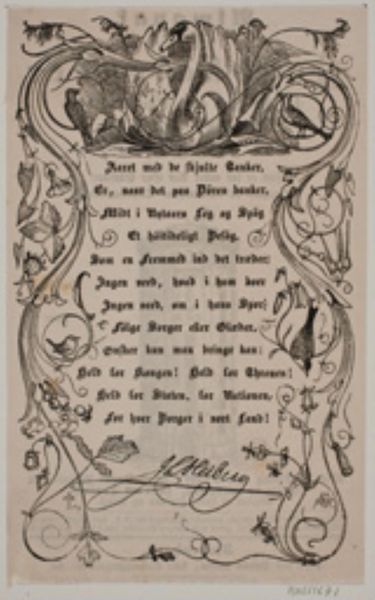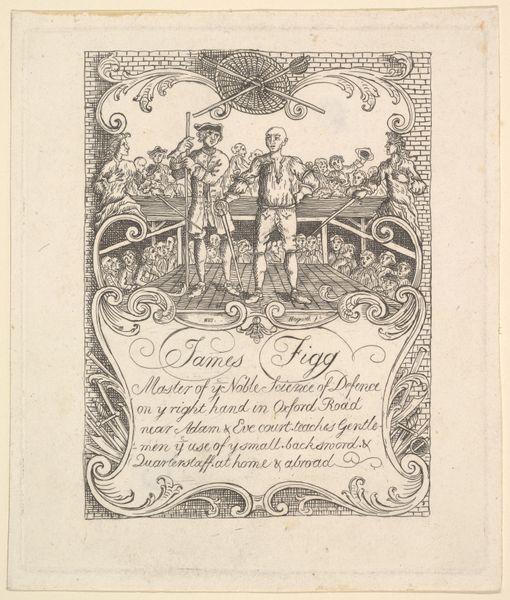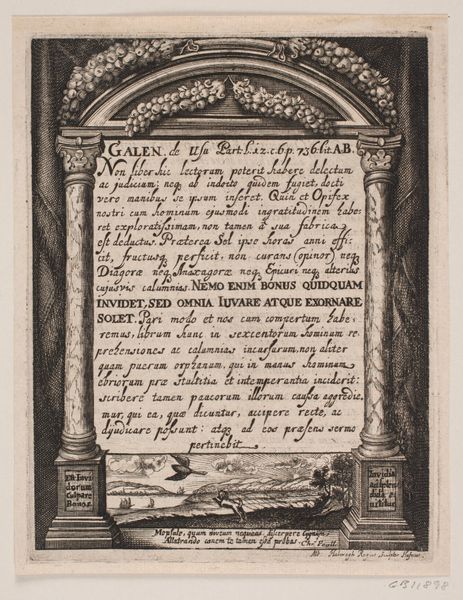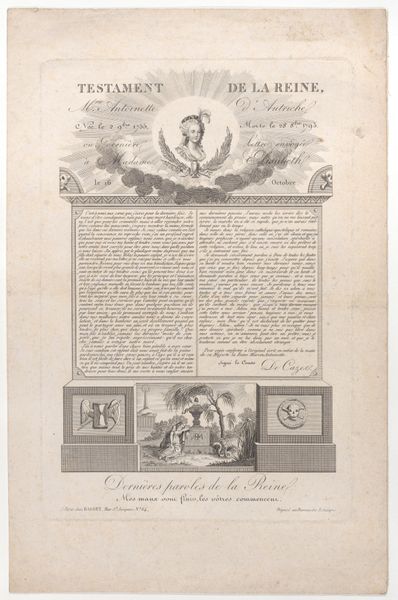
print, engraving
#
neoclacissism
# print
#
history-painting
#
engraving
Dimensions: height 195 mm, width 254 mm
Copyright: Rijks Museum: Open Domain
Curator: Here we have an engraving from 1797 titled "Explanation of the allegorical art print, of the National Assembly representing the people of the Netherlands." It's quite detailed, isn't it? The artist who drew it was G.x.d. Berg, with the engraving itself being the work of Jerm! Smek. Editor: It strikes me as a piece bursting with optimism, even with that rather imposing cannon sitting there. The crisp lines of the engraving, the neat rows of text… It all feels very…orderly, if that makes sense. Curator: The sense of order speaks to the neoclassical style which favored clarity and rationality. If you look closer, you'll notice cherubs at the top holding garlands, and allegorical figure sitting near that cannon – likely representing the Netherlands. The text surrounding the imagery elaborates on the ideals and principles of the National Assembly at the time. Editor: So, propaganda, in a very elegant package. That cannon becomes very relevant, doesn't it? It speaks to power, control, and the implied threat needed to maintain that supposed order. It’s all about tools: both the tools to spread ideas and the tools of potential violence that underscore those ideas. It’s interesting how the print elevates craft in its attempt to rally support. Curator: I agree, there’s a certain tension. It's as if the artists are simultaneously trying to convey a sense of national unity and acknowledge the realities of maintaining such a thing during a revolutionary period. Even the inclusion of a cannon in a print meant for popular consumption has a certain…bluntness to it, no? Editor: Absolutely. Think about the process of creating this. The engraving, done by hand, multiple copies made for wider distribution – a labor-intensive process meant to inspire. What kind of labor was happening behind the scenes of that "revolution" itself? Who was benefiting, and who was excluded? Curator: That adds a deeper layer to it. It’s fascinating how a relatively small print can encapsulate such large ideas and anxieties about nationhood and the power structures at play. Editor: Exactly! An object lesson in how materials and production speak louder, sometimes, than the image itself. Curator: It does make you wonder how it was received, doesn’t it? Such an insight on paper from so long ago.
Comments
No comments
Be the first to comment and join the conversation on the ultimate creative platform.
